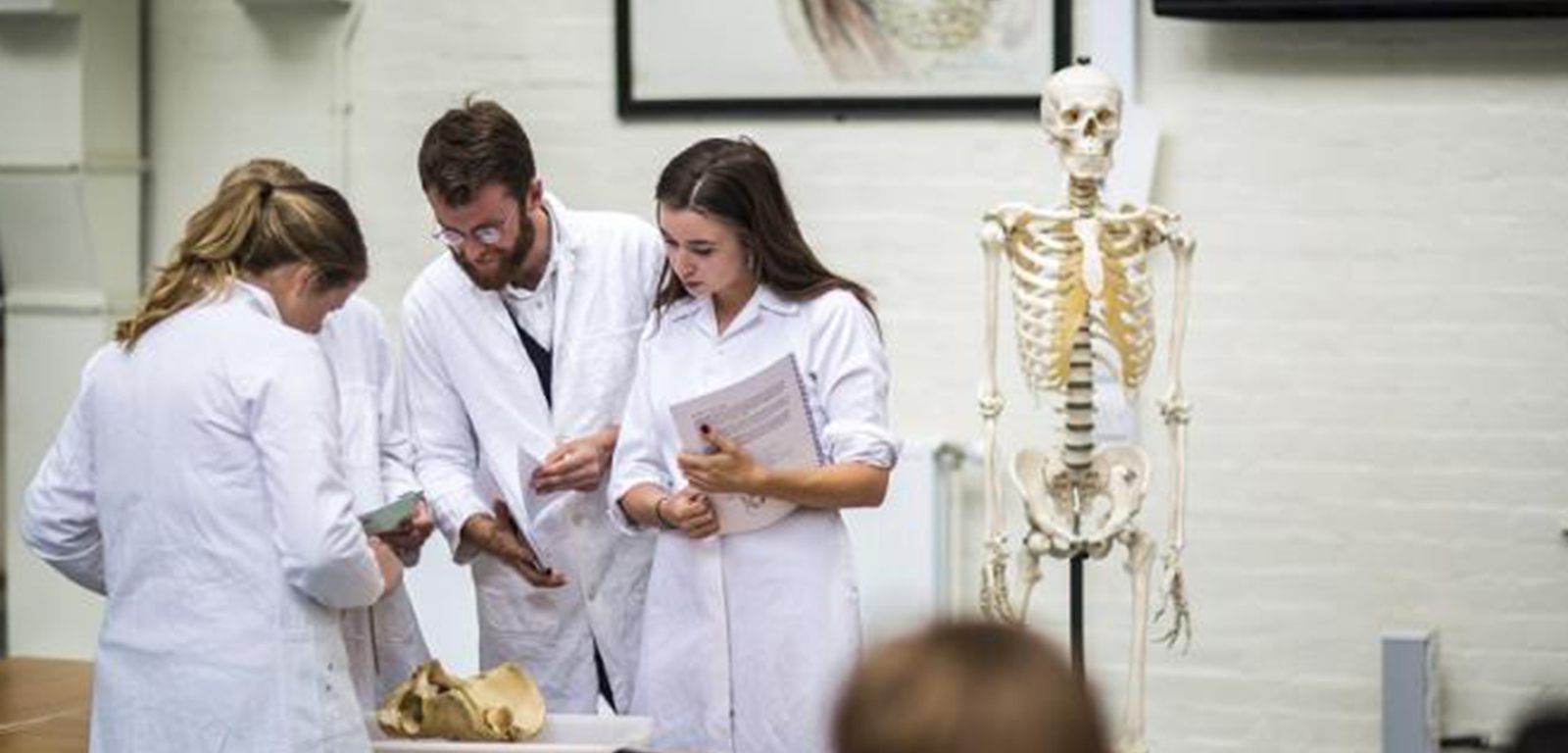

A UK 2:1 honours degree, or its international equivalent, in a medical, biomedical or relevant bioscience subject, or other subject allied to medicine. We will also consider applications from those with a UK 2:1 in any degree, with relevant work experience, for example professions allied with medicine or research laboratory (preferably in a biomedical context). Please contact the programme team to check before you apply.
For 2020 entry we accept the following English language qualifications at the grades specified*:
IELTS Academic: total 6.5 with at least 6.0 in each component.
TOEFL-iBT (including Special Home Edition): total 92 with at least 20 in each section. We do not accept TOEFL MyBest Score to meet our English language requirements.
PTE Academic: total 61 (at least 56 in each of the "Communicative Skills" sections; the "Enabling Skills" sections are not considered).
CAE and CPE: total 176 with at least 169 in each paper.
Trinity ISE: ISE II with distinctions in all four components.
For 2021 entry we will accept the following English language qualifications at the grades specified*:
IELTS Academic: total 6.5 with at least 6.0 in each component.
TOEFL-iBT (including Special Home Edition): total 92 with at least 20 in each section. We do not accept TOEFL MyBest Score to meet our English language requirements.
CAE and CPE: total 176 with at least 169 in each paper.
Trinity ISE: ISE II with distinctions in all four components.
*(Revised 21 February 2020 to remove PTE Academic from 2021 entry requirements. Revised 21 April 2020 to include TOEFL-iBT Special Home Edition in 2020 and 2021 entry requirements.)
Your English language qualification must be no more than three and a half years old from the start date of the programme you are applying to study, unless you are using IELTS, TOEFL, PTE Academic or Trinity ISE, in which case it must be no more than two years old.
In this programme you will:
learn anatomy through dissection
gain knowledge and experience of anatomical teaching
take additional modules on neuroanatomy, embryology, anatomy law and ethics and medical imaging.
contribute to world leading anatomical and/or biomedical research
Our programme aims to improve your theoretical and practical knowledge of human anatomy through an intensive on-campus dissection course, as well as the development and learning of theoretical and practical aspects of teaching anatomy at undergraduate and postgraduate levels.
This programme has two main strands. One is the in-depth study of the anatomy of the human body. Anatomical knowledge will be learned to a level to teach undergraduate and postgraduate students and professions allied to medicine. This strand will involve the dissection of a body in groups of three to five students over two semesters. This part of the course is largely self-directed, with regular “surgeries” when teaching staff are present to answer questions and help students with the dissections.
The other is anatomy pedagogy, covering the theoretical and practical aspects of teaching anatomy to undergraduate and postgraduate students. Next to theoretical lectures and workshops the first semester will focus on observing the teaching of anatomy to medical undergraduate students. The second semester will focus on being involved in preparing and carrying out teaching sessions to both small and large groups of students. The learned theoretical material, the observations and practical experiences will be compiled in an end-of year teaching portfolio. The experience that you will gain can be used towards an application as associate fellow of the Higher Education Academy.
Complementing these strands will be a lecture-based embryology course providing you with an understanding of normal human development and how normal development can go wrong, manifested in commonly observed congenital abnormalities. You will also study neuroanatomy, the health and safety of embalming procedures and handling bodies, the legal and historical aspects of anatomy in Scotland and the UK, an introduction to the ethics of using bodies in medical education and explore clinical techniques used to image the body.
More info: Click here
Semester one:
Basic Human Anatomy, Imaging and Embryology 1 (40 credits): Provides students with an in-depth knowledge of the anatomy of the upper/lower limbs and thorax, incorporating; gross anatomy, surface anatomy, medical imaging, and embryology.
Anatomy Law and Ethics (10 credits): Divided into 3 parts: Health & Safety of anatomy and body handling, the legislation that governs the activities of anatomy departments both in Scotland and throughout the UK, and the ethics of using human material for the teaching of anatomy.
Teaching is by lectures, seminars and tutorials. Courses are assessed by either, or a combination of, oral examinations, essays, multiple choice question exams, extended matching question exams, presentations and practical anatomy exams.
You have the option to finish after the second semester graduating with a Diploma in Human Anatomy, or to gain your masters by completing a summer dissertation project that can be either library-, practical- or laboratory-based.
Summer period:
Dissertation Project: 10,000 word dissertation and oral presentation (60 credits).
Semesters one and two:
Teaching Anatomy (20 credits): Theoretical and practical aspects of teaching anatomy to undergraduate and postgraduate students.
Semester two:
Basic Human Anatomy, Imaging and Embryology 2 (40 credits): Provides students with an in-depth knowledge of the anatomy of the abdomen, pelvis and head & neck, incorporating; gross anatomy, surface anatomy, medical imaging, and embryology. Neuroanatomy (10 credits): Gross Anatomy of the central and peripheral nervous systems, sensory and motor pathways, cranial nerves, spinal cord, spinal nerves and autonomic nervous system.

This programme has been designed to help you gain a highly regarded qualification in anatomy and the teaching of anatomy. It will provide you with a set of major transferable skills such as dissecting experience, teaching experience, expertise in health and safety and anatomy law and ethics.
This programme can therefore open up possibilities in for example anatomy teaching, anatomy laboratories, further studies in medical and biomedical sciences, further research leading to a PhD, and many more increasing your long-term career prospects.
